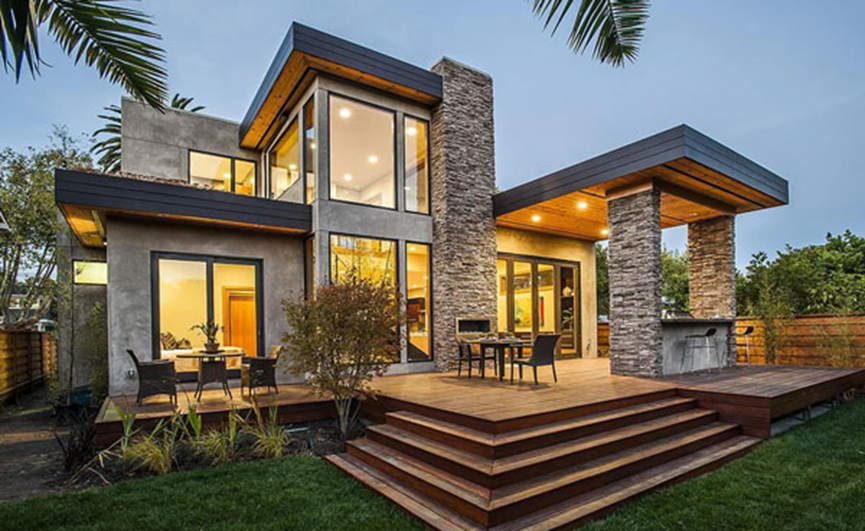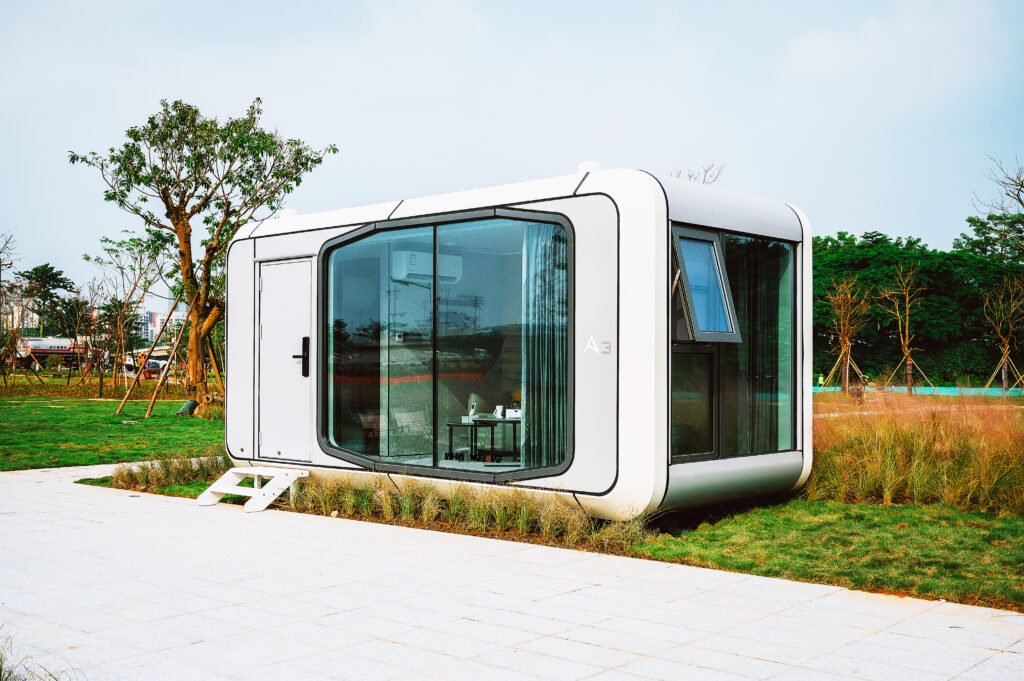As housing demand increases in Australia, portable houses are becoming a smart and affordable alternative. In 2025, portable houses will be popular because they are quick to set up and easy to move.
However, understanding all things, including price and rules, is essential before making a purchase.
The guide that follows sets out each of these points in plain language, giving you a clear road map from budget planning to move-in day. So, keep reading!

1) What Exactly Is a Portable House in Australia?
A portable house in the Australian market refers to any prefabricated home designed to be moved and installed with minimal construction.
Houses portable are built off-site in factories and then delivered to your chosen location. The most common types include:
- Expandable container homes: compact units that unfold or slide out to create larger living spaces
- Folding houses: structures with collapsible walls and roofs that fold flat for transport
- Flat-pack container homes: modular panels shipped as kits and assembled on-site
- Tiny house portable on wheels or skids: often mounted on trailers for flexibility and easy relocation
- Capsule houses are compact, modern living units designed to fit into small spaces. In 2025, they are gaining popularity due to increased housing costs and urban crowding. These homes are usually prefabricated and ready to install.
These homes are gaining popularity across Australia for their lower cost, faster installation, and adaptability to off-grid or rural settings.
→ How Councils Classify Portable Homes: Caravan vs Permanent Dwelling
In Australia, local councils decide how to classify a portable home based on how it’s used and how permanent it is. This classification affects what approvals and costs are required.
If the home is temporary and not permanently connected to utilities like water, electricity, or sewage, it is often treated as a movable home or caravans. These types usually don’t need full development approval and follow simpler rules.

If the home is intended for long-term living and connected to utilities, it is considered a permanent home. This means the owner must get:
A building permit
Approval under the National Construction Code (NCC)
Pay development fees and infrastructure charges
Allow for inspections by local authorities
Important: These rules change from state to state, such as in NSW, VIC, QLD, and WA, and even between councils. So, before setting up or buying a portable home, always check with your local council’s planning department to stay within legal boundaries.
2) 2025 Typical Portable House Prices in Australia
In 2025, portable homes will continue to gain traction across Australia as a faster and more affordable housing solution. Prices vary depending on size, design complexity, and whether you are purchasing a locally made model or an imported one.
Below is a breakdown of base-kit costs, which cover the factory-built home only (excluding delivery, installation, and approvals).
i) Micro-Studio Portable House (20–30 m²)
These small homes usually cost between A$30,000 and A$60,000. They are the cheapest option and come with basic things like wiring, insulation, and a simple kitchen and bathroom. They are great for one person, remote work, or use in a backyard.

ii) One-Bed room Portable Homes (40–70 m²)
The price for a one-bedroom portable house is usually between A$60,000 and A$120,000.
These homes are bigger and better for couples or small families. They often have a separate bedroom, living area, bathroom, and sometimes a small deck.
iii) Two-bedroom portable Family Homes (80–100 m²)
These family-sized portable homes generally cost from A$120,000 to A$200,000. The price depends on what materials you choose.
Cheaper materials like lightweight steel or plastic are more affordable, while timber and energy-saving features make the house more expensive.
iv) Large or Luxury Custom Portable Homes (100 m²+)
The biggest and most luxurious portable homes usually start at A$200,000 and go higher. Some high-end European designs cost around €177,000 before tax and shipping. These homes often include smart systems, large kitchens, and multiple rooms.

Important Note: These are factory base-kit prices. Your final move-in-ready cost will depend on delivery, crane hire, utility connections, local permits, and site preparation, covered in the next section.
3) Extra Costs You Should Consider When Buying a Portable Home
When planning your total budget, it’s important to look beyond the base price of the portable home. Here are the extra costs you should expect:
- In the first, site preparation and foundations usually cost between A$8,000 and A$30,000, depending on how complex the land is. For example, if it is sloped or near water.
- In addition, transportation and delivery fees typically range from A$5,000 to A$25,000, but this can be higher if the location is remote or hard to reach.
- Moreover, installation and crane hire generally cost between A$7,000 and A$20,000, which covers lifting the home into place and hiring skilled workers.
- Furthermore, utility connections for power, water, and sewage usually add about A$6,000 to A$22,000, especially if off-grid systems are needed.
- Also, council permitting and compliance costs vary across Australia, but expect to pay around A$3,000 to A$20,000, depending on your local council’s requirements.
Finally, don’t forget the ongoing yearly costs such as marina berth fees, park rents, maintenance, insurance, and local taxes, which can add up over time.
4) Australian Regulations & Approval Process for Portable Homes
Understanding the local rules is very important before setting up a portable home in Australia. Each state has slightly different regulations and approval processes. Here’s a quick breakdown:
i) New South Wales (NSW)
In NSW, portable homes are generally governed under Plannings Circular PS 21-016, where they may be classified as caravans or movable homes.
- If the unit is not permanently fixed and not connected to services (like water or sewerage), it usually falls under caravan regulations and may be exempt from full development applications.
- However, if the unit is used for full-time residence and connected to permanent utilities, you’ll need:
- A building permit
- Compliance with the National Construction Code (NCC)
- Council development approvals
- A building permit
ii) Victoria
In Victoria, tiny and portable homes are gaining council support, but:
- Permanent occupation requires:
- Planning permission
- Building permits
- Compliance with zoning laws and bushfire overlays (if applicable)
- Planning permission
- If the unit is temporary and unconnected to services, it may be treated as a movable house, which is easier to approve in rural or private land zones.
iii) Queensland
In Queensland, regulations vary widely by council:
- Some councils classify portable homes as a secondary home, needing:
- Development application
- Plumbing and drainage approvals
- Development application
- Others treat them as caravans, exempt from planning laws if used for non-permanent living and not hooked to utilities.
- Always check with your local planning authority (e.g., Brisbane City Council, Gold Coast Council) for site-specific requirements.
iv) Western Australia & South Australia
In WA and SA, engineering and environmental laws are particularly important:
- In bushfire-prone areas, homes must comply with Bushfire Attack Level (BAL) standards
- In cyclone regions, they must meet wind loading and structural standards under AS/NZS codes
- Permanent installation requires:
- Building certification
- Compliance with structural engineering reports
- Building certification
Local development approval depends on the size and location
5) FAQs about Portable Houses
i) Do portable houses need a council permit in Australia?
Generally, no permit is needed if the home is registered as a caravan and stays within size limits. However, once you connect it to permanent utilities, council approval is usually required.
ii) Is bank financing available for portable homes?
Yes, financing is possible through personal or construction loans. Most banks ask for a 20–30% down payment, depending on the home type and usage.
iii) What energy efficiency ratings must portable homes meet?
If used as a full-time home, it typically needs a NATHERS 6-star rating. For off-grid homes, state energy rules apply based on solar, battery, and water systems.
iv) Can I move my portable home interstate in Australia?
Yes, you can move it across states, but larger homes need special transport permits and escort vehicles. The cost can go up by 15–30% if moving to remote areas.
v) How often do portable homes need maintenance checks?
Every 3–5 years is common for the structure and chassis. In coastal or rough weather areas, yearly checks are recommended for long-term durability.
Conclusion
In conclusion, portable homes in Australia offer a flexible and affordable housing solution for 2025. However, buyers must consider not just base prices but also site, transport, and permit costs. Additionally, council classifications affect approvals and legal use.
With various sizes and styles available, from studios to luxury villas, portable homes are ideal for modern living, especially when paired with proper planning, compliance, and a clear understanding of state regulations.
Ready to get started? Contact us now to request a personalised quote and a step-by-step roadmap for council approval.


